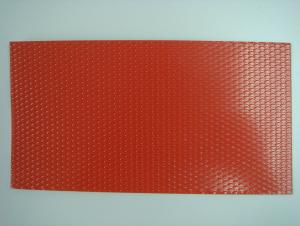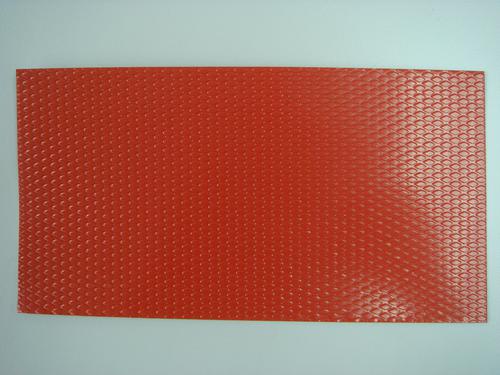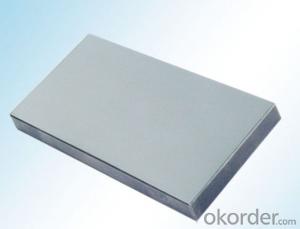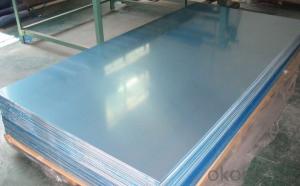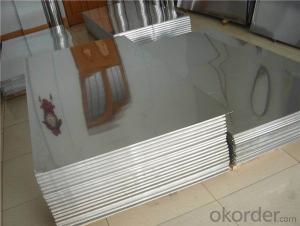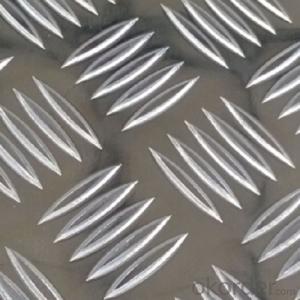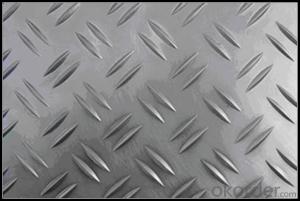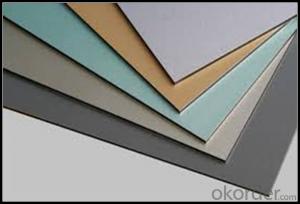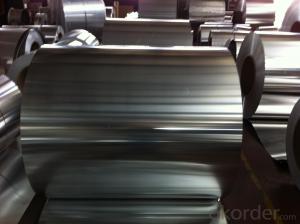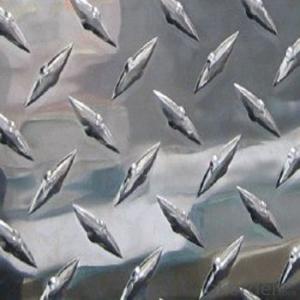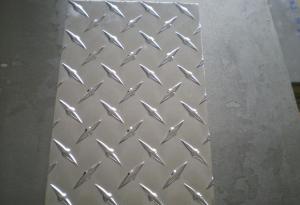Colored Aluminum Treadplate Rhombic Pattern Sheets
OKorder Service Pledge
OKorder Financial Service
You Might Also Like
Aluminium Treadplate in Rhombic Pattern:
1. Description
Alloy | 1050 1060 1070 1100 1200 3003 3004 5052 8011 |
Temper | O H14 H16 H18 H22 H24 |
Thickness (MM) | 0.2- 100mm.(+/-0.02mm) |
Width (MM) | 30-1700mm.(+/-0.5mm) |
Length (MM) | As per customer’s demands |
Application | Construction, Decoration, Automobile, Electronics, Machinery, Boat Construction, Aeronautics&Astronautics, Etc. |
2. Advantage
(1) As aluminium is both a stable and durable material, it provides excellent service as a roofing or cladding . This aluminium treadplate in rhombic pattern is well sold in Nigeria.
(2) Color can be matched as per customer’s demands..
(3) Acid-corrosion-resistance, long-lasting shine, beautiful patterns, anti-corrosion performance and stability, strong adhesion, impact resistance, non-toxic side effects, safety and environmental protection.
- Q: Are aluminum sheets suitable for marine vessel construction?
- Yes, aluminum sheets are suitable for marine vessel construction. Aluminum is lightweight, strong, and resistant to corrosion, making it an ideal material for building boats and ships. It also offers good thermal conductivity and is easily weldable, making it a popular choice in the marine industry.
- Q: What are the distinctions between standard aluminum windows and those that are custom-made?
- <p>Standard aluminum windows are mass-produced and come in set sizes and styles, offering affordability and quick installation. They may not fit perfectly into unique spaces and may lack customization options. Custom-made aluminum windows, on the other hand, are tailored to specific dimensions and design preferences, ensuring a perfect fit and enhanced aesthetics. They often come with more features and options, such as energy efficiency, security, and unique styling, but are typically more expensive and have a longer lead time for production and installation.</p>
- Q: Are the aluminum sheets suitable for manufacturing electronics components?
- Absolutely, aluminum sheets are a perfect fit for the production of electronic components. Aluminum, being a lightweight, durable, and reasonably priced material, finds extensive usage in the electronics sector. Its remarkable electrical conductivity is crucial for the efficient operation of electronic devices. Moreover, aluminum sheets can effortlessly be molded, trimmed, and fashioned into diverse components like heat sinks, enclosures, and connectors. Furthermore, aluminum boasts commendable thermal conductivity, enabling it to proficiently disperse heat generated by electronic components. Consequently, aluminum sheets emerge as an optimal selection for the manufacturing of electronic components.
- Q: 3mm heavy aluminum plate, multiple cubic meters per cubic meter?
- Long by wide by high density is multiplied by the weight. The density of aluminum is different according to the different metal content, one to eight series aluminum density is between 2.71-2.75.
- Q: Explain the various types of coatings that can be applied to aluminum sheets.
- <p>Aluminum sheets can be coated with several options to enhance their appearance, durability, and functionality. These include: 1) Anodizing, which creates a protective oxide layer, 2) Powder coating, offering a wide range of colors and textures, 3) Liquid painting, for a smooth, painted finish, 4) Laminating, which bonds a protective film to the surface, 5) Electrolytic coloring, resulting in a variety of colors, 6) PVD (Physical Vapor Deposition), for a high-quality, durable finish, and 7) Thermal spraying, applying a coating to improve wear resistance. Each method serves different purposes and has its advantages and limitations.</p>
- Q: How do you ensure the flatness of an aluminum sheet?
- To ensure the flatness of an aluminum sheet, it is important to follow certain steps. First, the sheet should be properly stored and handled to prevent any bending or warping. Next, it should be placed on a flat and level surface during cutting or machining processes. Additionally, using proper clamping techniques while machining or during any further processing can help maintain flatness. Lastly, inspecting the sheet for any signs of bowing or warping and taking corrective measures such as annealing or stress relieving if necessary, can help ensure the flatness of the aluminum sheet.
- Q: Can the aluminum sheets be used for architectural cladding?
- Indeed, architectural cladding can make use of aluminum sheets. Owing to its lightweight properties, durability, and versatility, aluminum remains a favored selection for cladding purposes. Its pliability and ability to assume diverse forms make it ideal for a broad spectrum of architectural designs. Furthermore, aluminum boasts corrosion resistance, ensuring its longevity as a cladding option. Moreover, the possibility of coating aluminum in various finishes enables customization to align with the desired aesthetic of the structure. All things considered, aluminum sheets emerge as a dependable and pragmatic choice for architectural cladding.
- Q: Are aluminum sheets resistant to staining?
- Yes, aluminum sheets are resistant to staining. Aluminum has a natural oxide layer that forms on its surface when exposed to air. This oxide layer acts as a protective barrier, preventing staining and corrosion. However, it is important to note that prolonged exposure to certain chemicals or acidic substances can still cause discoloration or staining on aluminum sheets. Regular cleaning and maintenance are recommended to preserve the appearance and longevity of aluminum sheets.
- Q: Can aluminum sheets be used in aerospace industry?
- Aluminum sheets find common usage within the aerospace industry due to their numerous desirable qualities. One of the foremost advantages is their lightweight nature, a critical factor for both aircraft and spacecraft. This characteristic aids in reducing fuel consumption and increasing the capacity for payload. Another significant attribute of aluminum is its exceptional strength-to-weight ratio, which imparts structural integrity to aerospace components. Furthermore, aluminum exhibits high resistance to corrosion, ensuring longevity and durability within harsh environments. Additionally, its commendable thermal conductivity qualifies it for heat dissipation in aerospace systems. Moreover, aluminum boasts easy formability, enabling the manufacturing of intricate shapes and structures. In summary, the versatility, strength, lightness, and corrosion resistance of aluminum make it the material of choice in the aerospace industry for diverse applications, including aircraft frames, fuselage panels, wings, and engine components.
- Q: Are 101 aluminum sheets suitable for solar panel frames?
- Yes, 101 aluminum sheets are generally suitable for solar panel frames due to their high strength-to-weight ratio, corrosion resistance, and ease of fabrication.
Send your message to us
Colored Aluminum Treadplate Rhombic Pattern Sheets
OKorder Service Pledge
OKorder Financial Service
Similar products
Hot products
Hot Searches
Related keywords
